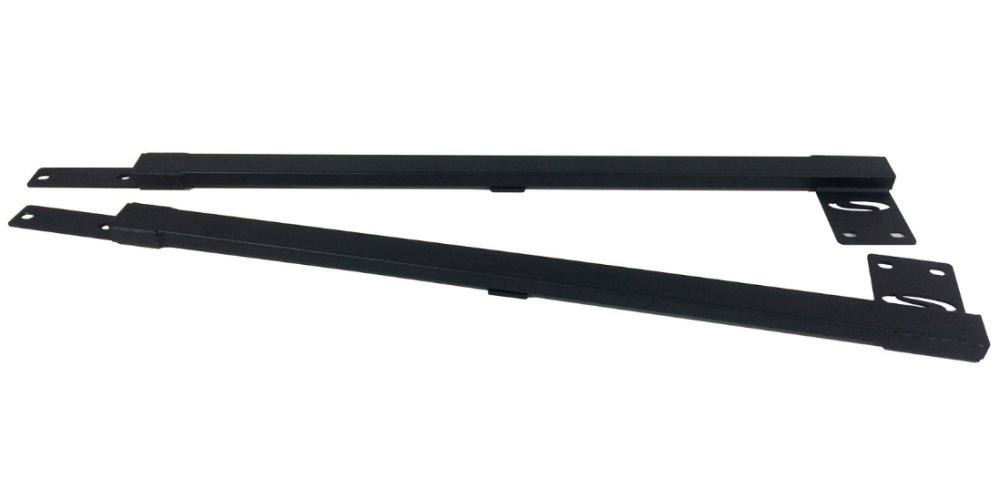Safely Using Jack Stands Under Your S197 Mustang – What’s Up in The Forums

Bolt-on accessory makes lifting and suspending your Mustang safe and easy but it isn’t required.
Many of the simplest do-it-yourself projects pertaining to any Ford Mustang requires lifting at least part of the car off of the ground, but if you put a jack or jack stand in the wrong place, you can do a world of damage. Ford provides insight on where to place the jack to safely lift the S197 Mustang, but what if you want to use a jack stand?
In many cases, you may want to put the jack stand in the designated jacking location, and that was the concern of The Mustang Source forum member MilesTeg when he posted in the 2010-2014 section of our forums, asking the community where to safely place a jack stand under his 2013 Mustang GT. While it might seem like a simple process to owners with years of experience working on their car, but to someone who is new to doing their own work, the idea of having their car fall off of a jack stand is serious enough to raise some red flags.
Introduction
When the OP started his thread, he explained that his 2013 Ford Mustang GT was his first unibody vehicle and having only worked with body-on-frame vehicles in the past, he was worried about damaging the car while swapping the wheels.
“I bought some new wheels for my 2013GT and I feel a bit stupid because I have no idea how to properly jack up this vehicle and put a jack stand under it.
I checked the owner’s manual and while it clearly indicates the jacking points (with raised arrows on the plastics fascia) it does not state a proper place to put a jack stand (and the notch in the plastic is certainly not big enough to put both the jack and the stand. Some googling leads me to places for placing stands when lifting half or all of the vehicle.
I am quite happy to work one wheel at a time.
I’ve always worked on cars with a body in frame design 2 axles so it was always easy to know where was safe to support the car.
So what’s the simplistic and safest way to properly change a single wheel on these machines?”
The question may seem so simple that many people would be afraid to ask it, but it is a valid concern and with fact that doing it incorrectly could lead to very unpleasant results, jacking up a car is something that you want to know how to do correctly.
Fortunately, the community was happy to help.

Detailed Explanation
The first member to reply was houtex, and his explanation was so detailed that the thread could have ended after he posted.
“Don’t feel stupid. Nobody knows everything, after all, and for everything there is a first time, yes? The 10,000 moments in life, y’know..
When I need a jack stand, I take my floor jack (you do have a low profile 2-3 ton decent quality floor jack, right? If not, get that first!) and place the pad of it on the pinch weld, more to the middle of the car, so as to be behind the front notch, or in front of the rear notch, and jack the car up. Enough so that when the car is up and ready to receive the jack stand, the notch is where the jack stand is going to go. Right where it should. Remove jack, repeat as needed. You can do all one side, or fronts first, or rears first, whatever floats your boat.
Be aware that *PROPER CHOCKING OF WHEELS MUST HAPPEN* when doing this. Go get a chocks, or blocks of wood, especially if you’re doing the rears first/only. The fronts have no way to stop from rolling off the jack/stands, after all.
If you need the suspension loaded, the axle can be jacked from the middle (being aware to not place the pad on the cover!) and then the stands placed on the ends of the axle tubes a near where the hardware’s mounted as possible. You can also do this via the pinch weld jacking and do one side if you’d rather, that’d be your call. The front suspension would be done while the car is on jack stands above, then use the jack to raise the lower control arm… just be careful where you place the jack. You’re probably doing this with the wheel off, too, as it’s a suspension item you’d be working on that would call for this, say, properly fastening a control arm’s bolts (arm should be in ‘ride position’ when tightening the bolts)
Changing the wheels/tires you probably don’t want the axle loaded though, just info for ya.”
That is the perfect answer, touching on every aspect of the safe-lifting process before going into more detail on how to lift the car for different tasks, but some members had an easier alternative with help from the aftermarket.
Jacking Rails
After the lengthy reply on how to safely use a jack and jack stands under an S197 Ford Mustang, Gabe suggested a set of bolt-on jacking rails, linking the product from Steeda. He has them on his pony car and he states that they make jacking the car up and placing it on jack stands much easier.

For those unfamiliar with jacking rails, they are simple metal rails that bolt to the undercarriage and rather than jacking on the pinch weld of the body, you lift on the bolt-in rails. Several other members to chime in to support the jacking rails with “EF1” pointing out that they are also available for the S550, so if you have a Mustang from one of the past few generations, jacking rails make lifting the car to work on much easier and safer.

If you have a question about jacking up your S197 Mustang or using jack stands, click here to head into the thread to take part in the conversation.
